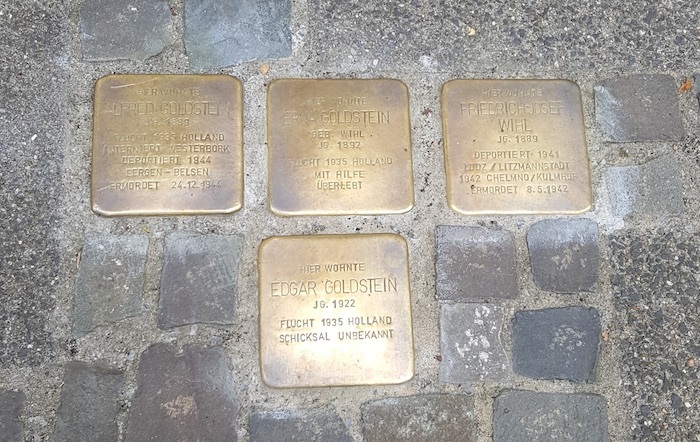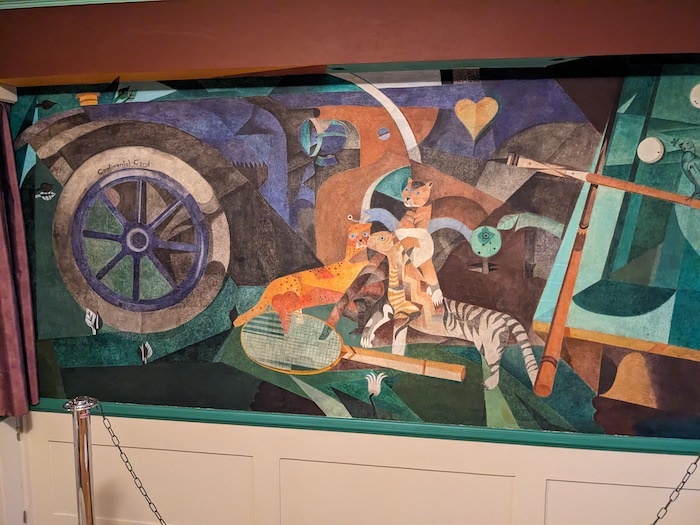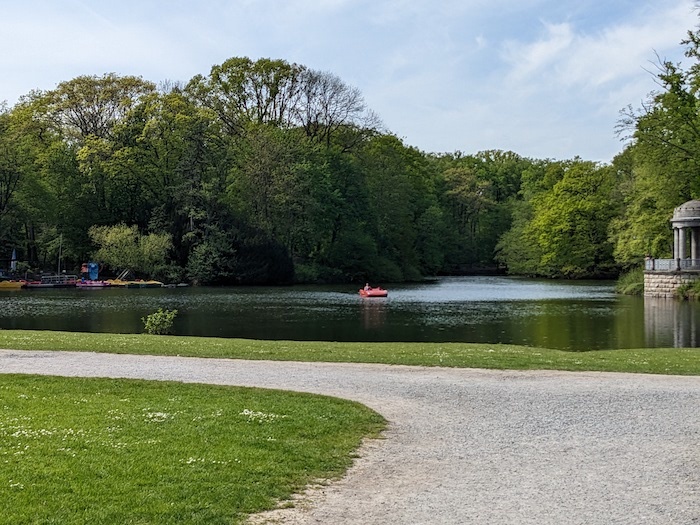May. 23rd, 2023 08:32 pm
Germany, Thursday

These are stolpersteine, stumbling stones in English. A man named Gunter Demnig goes around Europe and puts them in front of the houses of people who were forced to leave because of the Nazis. They’re meant to arrest the attention of people passing by, to remind them of deportation and exile and murder, of all the men and women who disappeared.
These particular stones are for my grandparents, my father, and my grandmother's brother. My brother found them on the doorstep of their house, and when a neighbor walked by my brother tried to explain his connection to them and how surprised he was to see them. This led to the neighbor calling someone who spoke English, who called someone else, and finally my brother was put in touch with a woman who was the head of a museum chronicling Jewish life just before and during the Nazi regime in Krefeld.
The museum is called the Villa Merlander, and Doug and I go there the next day. There’s a new head, Sandra Franz, who graciously takes the time to tell us the museum’s history and show us around. Richard Merlander, who had owned the house, was Jewish and gay, and so doubly in danger from the Nazis. (Sandra says that the museum will expand in the next few years, and will include new exhibits about homosexuals during that time period.) He had gotten rich from the silk factories and threw lavish parties, but, sadly, he was never accepted by that society because of his sexuality. Before he was killed in a concentration camp he had tried to leave the house to his partner in Berlin, but the letter he wrote with the bequest was not accepted as a legal will. Instead the villa turned into a Bed and Breakfast after the war, and then became the museum.
All the exhibits are in German, so we don’t understand a great deal. Sandra says that the museum will translate everything into English as part of the expansion. One newspaper article that Sandra translates stays with me: the Nazi mayor asked for his pension after the war, and he got it. It’s infuriating.
Two murals had been discovered recently, hidden under wallpaper, and we go to see them. At first I think they’d been papered over to save them from the Nazis, who would have called them degenerate art, but the story is less dramatic than that. Merlander had commissioned them for a gambling room, and the owners of the Bed and Breakfast thought the dice and cards and cigars didn’t belong in a place where they hoped families would stay.

I’d never heard of the artist, Heinrich Campendonk, but he’s apparently pretty famous; the uncovered murals were news all over the world. I like them a lot. Standing in the room, looking at hearts and tigers and a menacing joker, I think there must be a story there, about hidden art, hidden identities, hidden lives.

We meet an archivist at the museum who’s interested in photos of Krefeld before and during the war. He pages through a book of them, and suddenly I see my father’s name. It’s in a list of students in second or third grade, lined up for a picture. Disappointingly, though, the kid identified as him is clearly someone else, and it turns out the list was based on someone’s imperfect memory. I vow to send them more photos, compelling enough to get my father’s real identity into the museum. Sandra looks intrigued when I say I have a picture of Alfred and his motorcycle.
Then we go to lunch with the former head of the museum. The restaurant is in a park with a lake, a place that used to be someone’s private hunting ground and was later donated to the city.

Tags: